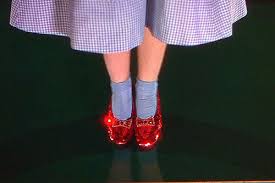 Looking for a way to shed a few pounds this summer? If you start with your home, you will gain more than weight loss benefits. Consider the excess weight that is in your home in the form of clutter. Clutter not only adds pounds, but drains your finances and takes a toll on you and your family – physically, mentally and emotionally.
Looking for a way to shed a few pounds this summer? If you start with your home, you will gain more than weight loss benefits. Consider the excess weight that is in your home in the form of clutter. Clutter not only adds pounds, but drains your finances and takes a toll on you and your family – physically, mentally and emotionally.
Take a guess at the approximate weight of these items (answers below):
By taking time to de-clutter your home this summer, you will enjoy these benefits.
Physical
Mental & Emotional
Financial
Shed some weight in your home this summer and you might find that the space you create promotes healthy changes in other areas of your life.
Answers to above: 1) 30 pounds 2) 15 pounds 3) 17 pounds.
When Laura Kelleher saw a Facebook contest to win a room makeover, she didn’t realize the full effect of uploading a photo of her messy playroom. The contest was the first annual ‘Home Makeover Facebook Contest’ run by NAPO-GPC as a way to celebrate January as GO Month, or ‘Get Organized Month,’ in order to offer encouragement to people to start the New Year off with less clutter, less stress, and more clarity. After being selected as one of five finalists, the Kelleher family was selected as the 2017 winner.
Laura and her husband Tom, of Horsham, PA, live in a quiet suburban neighborhood with their three active children. The playroom, which is the first visible space upon entering the house, is a hub of creativity and imagination, particularly for the two older boys, ages 6 and 10, who build with Legos, collect dinosaurs, decorate the room with their artwork, and have a large collection of cars, trucks and collectibles. Then there is their 10-month-old baby sister who is just starting to explore the world of her big brothers. Getting the playroom organized was becoming an urgent need with stray Lego pieces within their baby sister’s reach.
The overarching goal for organizing the room was based on the fact that both of their sons are autistic. The lack of a clear system for the boys to access their toys and art projects created stress and an inability to function smoothly at home. Although both Tom and Laura knew their boys would respond well to systems and order, the project was too overwhelming for them to tackle on their own.
So on March 31, eight organizers from NAPO-GPC volunteered their time and talents to plunge into the Kelleher’s playroom. After clearing the room of all toys, books, and games, the professional organizers assembled five IKEA shelving units, sorted and categorized the vast variety of toys, and then brought it all together into a beautiful, well-ordered system. Laura and Tom worked alongside the team making decisions and securing the units to the wall. When completed, there was an entire section devoted to Legos, a bookcase for all craft items and books, and bins specifically dedicated to toddler toys.
The team completed the makeover in under five hours and then they waited for the boys to arrive home from school. It was like a surprise party and Christmas rolled into one! Now the brothers could rediscover their treasures and everything had a place! Bins were labeled and lids protected against the dangers of small pieces. No longer a stress zone, the family could enjoy the playroom as intended.
Click on the above title to learn more about the featured author.
 Relocation is one of those infamously “stressful” times of our lives. Even those of us who are veterans will admit to the fact that the sheer amount of facets that need to be managed during a move adds some level of anxiety.
Relocation is one of those infamously “stressful” times of our lives. Even those of us who are veterans will admit to the fact that the sheer amount of facets that need to be managed during a move adds some level of anxiety.
Whether moving near or far, change is part of the package – new people, new schools, new jobs, new neighborhoods, new neighbors and yes, a new home.
My husband’s corporate job moved us (a family of five) around the U.S. for a period of over 20 years. I realized from the very beginning that this would be a way of life for our family for quite some time. In order for us to not only keep our sanity but actually enjoy the adventure, I needed to have a plan. Essentially, my plan developed from taking a step back and seeing the big picture. I asked myself:
By answering these questions, I was able to prioritize the steps of our move and create a repeatable process to carry us through each successive relocation. I hope that my answers might help you look at your own family’s needs in the face of one or multiple moves.
What will our nomadic life look like?
Truth be told, many a friend and family member worried aloud about how my children would fare growing up without the consistency of a hometown, schools and friends. I chose to envision a life that would be enhanced by our travels – my children would learn that people are people wherever you go, no matter how they look or sound. They would experience cities and environments rather than merely reading about them – things like walking on Mt. Rainier (an active volcano), battling to walk down Michigan Ave while leaning into the Chicago wind, and watching dolphins jump in the coastal waters of Florida. I shared my vision and excitement with the rest of my family and let them know how lucky we were!
What can or will change?
Almost everything! As far as living spaces were concerned however, the changes involved the size and number of rooms and the amount of storage. Would the garage be large enough for cars, bikes and storage? Would there be a basement? Would the kids each have their own rooms or will they have to double up? Some changes were welcome, others less than desirable. Adding some creative storage and decorative accents always helped with the adjustment.
What can or needs to stay the same?
I decided that since all of our surroundings including most of the people would be changing, it would be important to preserve things that gave us “roots”. With each move I kept much of our décor the same, especially for the kids. I would hang their curtains right away and keep the same bedding. Those things changed at times when they grew out of them. We would have weekly letter-writing sessions in order to maintain relationships with family and friends. This had so many benefits: family time together, honing writing skills, honing relationship skills. I also made it a point to cook traditional holiday recipes so that we wouldn’t forget our family background and would feel connected on holidays when we couldn’t actually attend in person.
What will support each family member?
This is where organization really became essential. It is difficult to be successful, in anything and at any age, if your surroundings continue to change. Therefore, I would set up each home with consistencies. Kitchens were always arranged with table settings nearest the table and furthest from my cooking area so that kids could help and not be underfoot. Drawer items in kitchen, bedrooms and bathrooms were set up in similar order from house to house. Garage and laundry bins followed suit. Within no time, everyone knew where to find what was needed regardless of the new home layout.
Even though you may move often: embrace your life, be kind to yourself and your family and you can always be living at Home.
Click on the above title to learn more about the featured author.
 Are you overwhelmed just thinking about organizing your photos? You’re certainly not alone. I have clients, friends and family members who have boxes of old photos and a computer filled with a mishmash of photos. Where to begin? What to keep? Digital vs. physical? Huh???
Are you overwhelmed just thinking about organizing your photos? You’re certainly not alone. I have clients, friends and family members who have boxes of old photos and a computer filled with a mishmash of photos. Where to begin? What to keep? Digital vs. physical? Huh???
Try these ideas for organizing them:
Think of your photos in three categories. Whether physical or digital, you can break down your photos into these categories:
Tip: the ones you want to grab should the house be on fire.
Tip: the ones that trigger good memories or are beautiful.
Tip: they don’t make you smile or look similar to the ones that do.
You’ll need to make some basic decisions. This is the hard part but it needs to be done at the outset of the project.
Decision 1: How do you want to preserve the TREASURES?
Do you want to combine the physical and digital photos into concise collections? Consider these as “coffee table books” that you’ll share with family and friends and peruse periodically on your own.
Here are your options:
Decision 2: How do want to save the KEEPERS?
Do you want to leave the physical Keepers as they are or have them digitized? Do you want to dismantle and cull existing photo albums?
Consider these options:
My recommendations:
Decision 3: How will you carve out time to work on the photo project?
This is a big (and fun!) project that takes time. Analyze your calendar and work style and make a commitment. For example, would two Saturday afternoons a month work for you? In the evenings when you’re watching TV? Make appointments with yourself and mark the times in your calendar.
I truly hope you enjoy the process because to me, photos are the BEST memory triggers. Be very selective in what you keep because the next generation does not want to go through your photos – they just want your TREASURES.
Click on the title above to learn more about the featured author.
 Do you struggle trying to accomplish everything you want to get done in a week? Are you always asking yourself “where does the time go?” Are you always running late for appointments? Instead of trying to keep it all organized in your head, start a time management system for yourself by using a calendar (digital or paper, whatever your preference), a Day-Timer, or even an excel spreadsheet will work.
Do you struggle trying to accomplish everything you want to get done in a week? Are you always asking yourself “where does the time go?” Are you always running late for appointments? Instead of trying to keep it all organized in your head, start a time management system for yourself by using a calendar (digital or paper, whatever your preference), a Day-Timer, or even an excel spreadsheet will work.
Remember school schedules? The week is scheduled by the day, classes with start and end times are filled in first and the remaining time is what you have left for the week. Start with your non-flexible commitments, such as; work, and then plan the other activities or tasks by the days and times available in the space you have left. Block out the amount of time each commitment, task, or activity will take and include travel time if necessary. This will visually put your time available to accomplish your tasks for the week “at a glance” and into perspective. This is imperative for getting a handle on your time management schedule. If there are overlapping commitments and a shortage of time available to get everything accomplished, you know it’s time to reorganize your week.
Keep in mind, you do need to sleep, so only schedule your time during your realistic waking hours. Each day follow your day’s schedule of events to know where you have to be and when. Then when emergencies crop up and they will, you will have a much better handle on where to reschedule the lessor priorities.
Don’t overbook yourself. Be realistic, allow for travel time and most importantly, don’t forget to allow for “down-time”!
Click on the title above to learn more about the featured author.
 The first day of Fall is September 22. Work and school are back in full swing. Managing your to-dos effectively is essential to maximizing your productivity at home and work.
The first day of Fall is September 22. Work and school are back in full swing. Managing your to-dos effectively is essential to maximizing your productivity at home and work.
A while ago I gave a presentation called “Stop Mumbling, Oops, I Forgot: How to Effectively Manage Your To-Dos.” With good intentions, people say they’ll do something but then forget because it wasn’t noted somewhere. People waiting for the promised ‘something’ to be done are disappointed. At work, this is a particularly bad practice. A good practice is to make notes on your to-do list or calendar so tasks are not forgotten.
Even with the best systems, life sometimes gets in the way. As John Lennon said, “Life is what happens to you while you’re busy making other plans.”
Case in point: I received an email from an attendee the next day. “My kids need completely different school supplies than what we bought, my husband suddenly needs to take his car into the shop, mom’s aide left early without doing the grocery shopping, and I have a report deadline at work tomorrow. How do I know what to do first?” Let’s call her Amy and her husband Michael.
I made these assumptions: The report will take Amy’s available time to complete, and Amy and Michael each need a car to get to work.
Following was my response.
First, Amy should complete the report and meet the deadline. Her job provides needed income and benefits, so she shouldn’t potentially put it at risk.
Second is Michael’s car. There are a few options. Have Michael find out if the auto shop provides a loaner car, ask someone to drive him from the shop to work (if convenient), call Uber/Lyft or wait for the car to be repaired.
Third comes food. Cereal, eggs and PB&J (or whatever is on hand) can fill bellies for a day. Other options include ordering food from a market with home delivery, ordering takeout with delivery, and asking the aide to get groceries the next time he/she’s on duty.
School supplies are fourth. Amy can order the supplies online with next-day delivery or pickup after work.
______________________________________________________________
General takeaway tips:
• Have the school provide in advance a list of needed supplies and buy them then.
• Schedule non-cancelable appointments with yourself to work on and complete reports and other important work well before the deadline to avoid a last-minute crises.
• Develop a Plan B to get to work in case of future car trouble or other emergency.
• Join AAA or another roadside-assistance plan.
• Keep the fridge and pantry stocked with essentials such as cereal, milk, bread, eggs, pasta, tuna, soup and frozen meals.
Having a contingency plan for emergency situations helps to make life less stressful. Who wouldn’t want a little less stress?
When life overwhelms you, stop and take a deep breath. Figure out what needs to be done and by when. Prioritize by most-to-least important. So, first do what needs immediate attention. If you find crisis situations happen too often, click HERE to contact a member of the Greater Philadelphia Chapter of the National Association of Professional Organizers for help.
Click on the title above to learn more about the featured author.